The key to political understanding is placing yourself in the other person’s shoes and walk the paths they’ve trodden.
As I gained my political ideology footing throughout the 2000’s, I was always perplexed by the adamant, passion-filled arguments from proponents of the environment. Just as any other matter, I knew a spectrum existed that included the most extreme views who were advocating environmental issues to push a larger agenda, and there were sincere people who truly wanted a better environment with less pollution.
The extremist characterizations of those who opposed them never bothered me. I knew the people I voted for were not pushing for more polluted drinking water, dirty air, or killing every living animal into extinction. However, I wanted to discover why and how the environmental movement gained such traction in the heart and minds of so many.
Also, how bureaucracies gained so much power in certain areas that they could make statements such as this, "We've always been pushing the limits to find out where we can go," the chairman of the South Coast district, William Burke, said in a 2005 interview. "Does that aggravate people? Yes. Does it get things done? Yes".
So, California is an ideal place to start for environmental advocacy movements.
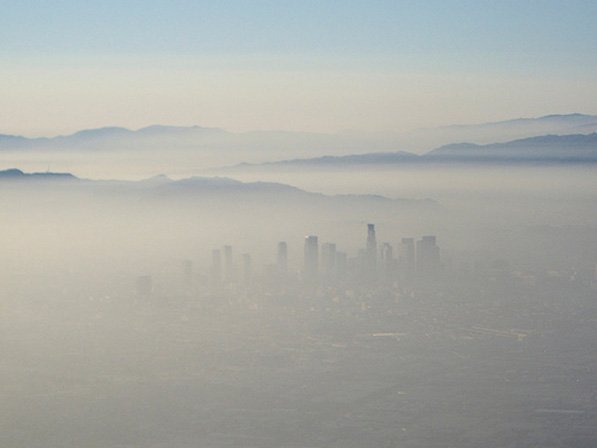
Digging through the archives of Los Angeles, I realized the problem of smog goes back to the early 20th century. Thick clouds of hazy smog were burning the eyes of Los Anglicans before the 1940’s.
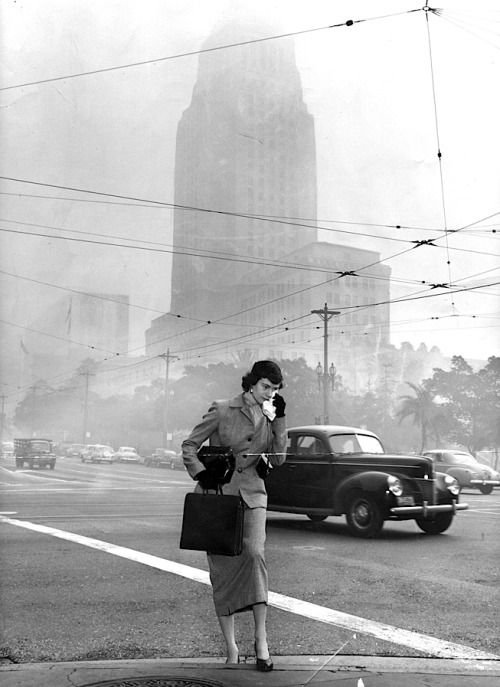
LA began it’s first air pollution control program in 1945. Since that point, many scientists and local universities were working on analyzing air particulates and attempting to find ways to clear the air.
According to the American Center’s History of the Modern Environmental Movement in America, by Erin L. Gordan, the modern day environmental movement began in the late 1960’s.
So, two generations of Californians grew up under the periodic cloud of pollution. This was when much of the nation did not know what “smog” was.
Scientist began investigating automobile emissions as a culprit in the mid 1950’s, however we must understand other aspects of southern California that makes it more susceptible to air pollution than other regions.
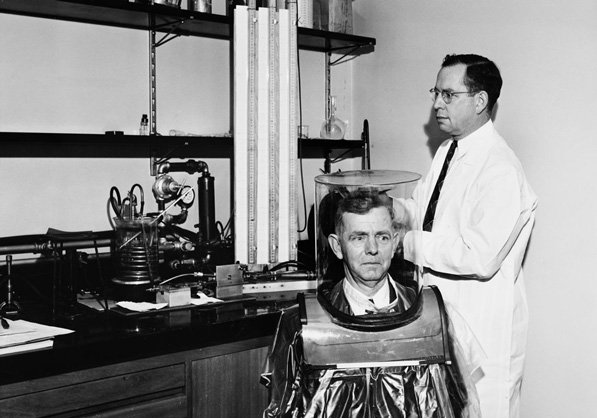
UCLA's smog plastic helmet experiments from the 1940s
Most air particulates are cleansed from the air with rainfall. Since rainfall is rare in southern California, particulates tend to linger in the air longer.
California’s topography also contributes, the shape of the valley nested between mountains that traps many natural elements in addition to the products emitted by the many humans in the region. This is why many people described the cloud as a cloud of ash in the early days because volcanos and forest fires would produce a similar effect. On some days, temperature inversions (air closer to the ground becomes cooler than the air above) acts as a lid that traps pollutants close to the ground with no vertical mixing and thus no dispersion of pollutants.
Other areas of the nation were experiencing the full effects of neglect and pollution in the nation. This is why the iconic fiction book, The Great Gatsby, described an area as, “the valley of ashes”. This place in the book mirrors the real industrial area of Queens between West Egg and Manhattan. The “ash” is really grayness caused by dust and smoke from nearby factories, trains, and other transport vehicles. The dust and smokestack soot deposits covered the entire region.
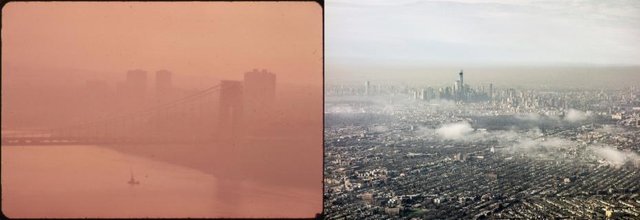 New York City 1973 vs 2013
New York City 1973 vs 2013
The Great Lakes of Michigan experienced much pollution during the 20th century. When I visited the area in 2017, locals told me of their experiences as children with the lake being so polluted, that discolored water stood still and some areas would not freeze during normal freezing periods. Feeding into Lake Erie, the Cuyahoga River fires from pollution is the lone culprit for ushering in the Clean Water Act. The Cuyahoga River has caught fire a total of 13 times dating back to 1868. But the fire in 1969, helped spur action that ultimately led to the passage of the Clean Water Act in 1972.
These and many other examples date back to Chicago passing the first "Smoke Control" law in 1881. We know about the pollution soot of Pittsburg's steel factories to Kansas City's industrial bellows , to the poisoning of Somerville, Texas town by their “tie plant”, with lawsuits issued as recent as 2006*1.
Remembering the past and how certain issues became national issues is important to know certain groups' motivations. I will take the noble aspects of the environmental arguments and advocate for sane policies to generate a balance of economic vibrancy and environmental conservation.
Although I continue to honor the great oil & gas industry for this nation’s prosperity, security, and overall ability to live with many of the modern conveniences we enjoy daily, I also recognize free market competition for better, cleaner, cheaper and more efficiencies wins the day.
The automobile industry is a perfect case for allowing the best to win freely. I’m cheering for the American made all electric Teslas to be successful while also appreciating the great advances our automobile industry made with the internal combustible engine. The exhaust reduction and efficiencies achieved is astonishing, and even with thousands of more cars on the road today vs 1960, the air quality is many factors cleaner than decades ago.
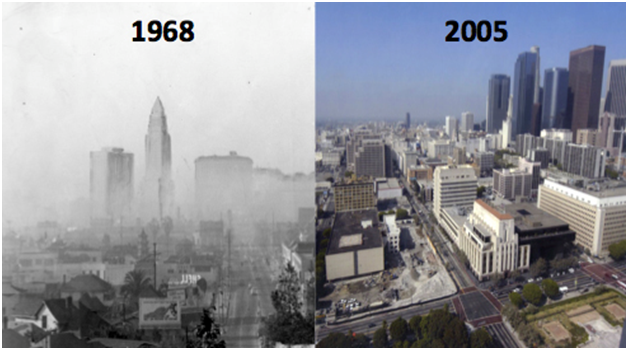
LA, improved air quality from 1968 vs 2005
Blockchain technology can assist with measurement of energy use, particulate outputs and efficiencies with projects such as GRID+, Powerledger, and WePower. So, at this point in history, we can advocate for all forms of technological advances. Due to our better awareness and the transparency measurement possibilities of industrial equipment down to automobiles. Companies that make the effort to capture and properly dispose of toxic waste should be incentivized not only with dodging fines, but also social or monetary credits. With tokenization of assets and processes, all efforts towards more clean, more efficient, and more power can be rewarded via token economics.
1Koppers Inc., a Pittsburgh-based chemical manufacturer is the current owner of the massive wood-treatment facility, which for more than 100 years churned toxic chemicals into the atmosphere while manufacturing phone poles and bridge supports. Locals call it the "tie plant" since it was once the nation's largest producer of railroad cross-ties. Previous owner of the plant include Fort Worth-based BNSF Railway (formerly the Chicago-based Atchison, Topeka and Santa Fe Railway)